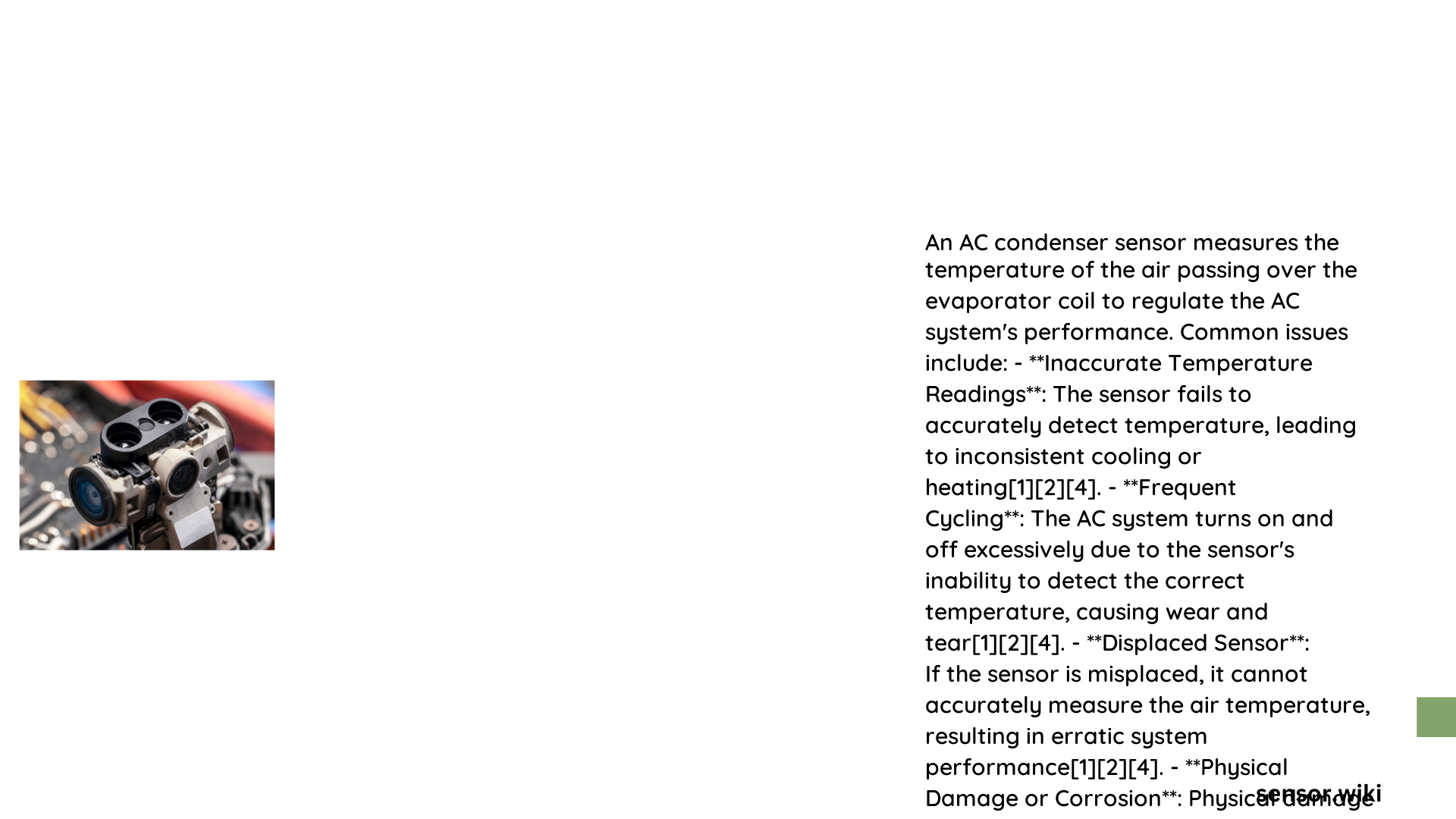AC condenser sensors are sophisticated electronic components critical for monitoring and regulating temperature and pressure in air conditioning systems. These precision instruments provide real-time data that ensures optimal system performance, prevents potential failures, and maintains energy efficiency across various environmental conditions. By continuously tracking critical parameters, AC condenser sensors play a pivotal role in protecting complex cooling infrastructure and delivering consistent thermal comfort.
What Are AC Condenser Sensors?
AC condenser sensors are specialized electronic devices designed to measure and monitor key operational parameters within air conditioning systems. These sensors typically focus on two primary measurements:
- Pressure Sensing
- Monitors refrigerant system pressure
- Detects potential system irregularities
-
Provides diagnostic information
-
Temperature Monitoring
- Tracks condenser coil temperatures
- Prevents overheating
- Enables efficient system protection mechanisms
What Specifications Define AC Condenser Sensors?
Pressure Sensor Specifications
| Parameter | Specification |
|---|---|
| Operating Temperature | -30°C to +130°C |
| Pressure Rating | 0 ~ 2.0 MPa |
| Supply Voltage | 5.0 ± 0.25 V DC |
| Output Voltage | 0.5 ~ 4.5 V DC |
| Maximum Supply Current | 15 mA |
Temperature Sensor Characteristics
- Range: -11°C to 68°C
- Sensor Type: 20K Resistance NTC Thermistor
- Accuracy: ±1.5% Full Scale
How Do AC Condenser Sensors Function?
AC condenser sensors perform multiple critical functions:
- System Protection
- Prevent compressor overheating
- Detect potential refrigerant flow issues
-
Monitor temperature during defrost cycles
-
Performance Optimization
- Provide real-time operational data
- Enable precise temperature and pressure control
- Support energy efficiency strategies
What Are Common Troubleshooting Techniques?
Diagnostic Approach
- Electrical Connection Verification
- Check sensor wiring integrity
- Inspect connection points for corrosion
-
Ensure proper electrical continuity
-
Output Signal Analysis
- Use multimeter for voltage measurements
- Compare readings with manufacturer specifications
-
Identify potential sensor degradation
-
System Pressure/Temperature Validation
- Utilize professional diagnostic tools
- Cross-reference sensor data with external measurements
- Detect potential calibration discrepancies
How to Replace AC Condenser Sensors?
Replacement Process
- Preparation
- Obtain exact matching replacement sensor
- Gather necessary diagnostic tools
-
Ensure system is powered off
-
Removal Steps
- Disconnect electrical connections
- Carefully extract existing sensor
-
Clean mounting location
-
Installation Procedure
- Position new sensor precisely
- Secure mounting hardware
- Reconnect electrical connections
- Perform system initialization
Cost and Time Considerations
- Sensor Cost: €15 – €50
- Replacement Time: 30-120 minutes
- Professional Service: Recommended for complex systems
Expert Recommendations

- Always consult manufacturer specifications
- Use professional-grade diagnostic equipment
- Perform regular preventative maintenance
- Consider professional installation for complex systems
Conclusion
AC condenser sensors represent sophisticated technological solutions critical for maintaining HVAC system performance and reliability. Understanding their function, specifications, and maintenance requirements ensures optimal operational efficiency and extended system lifespan.
